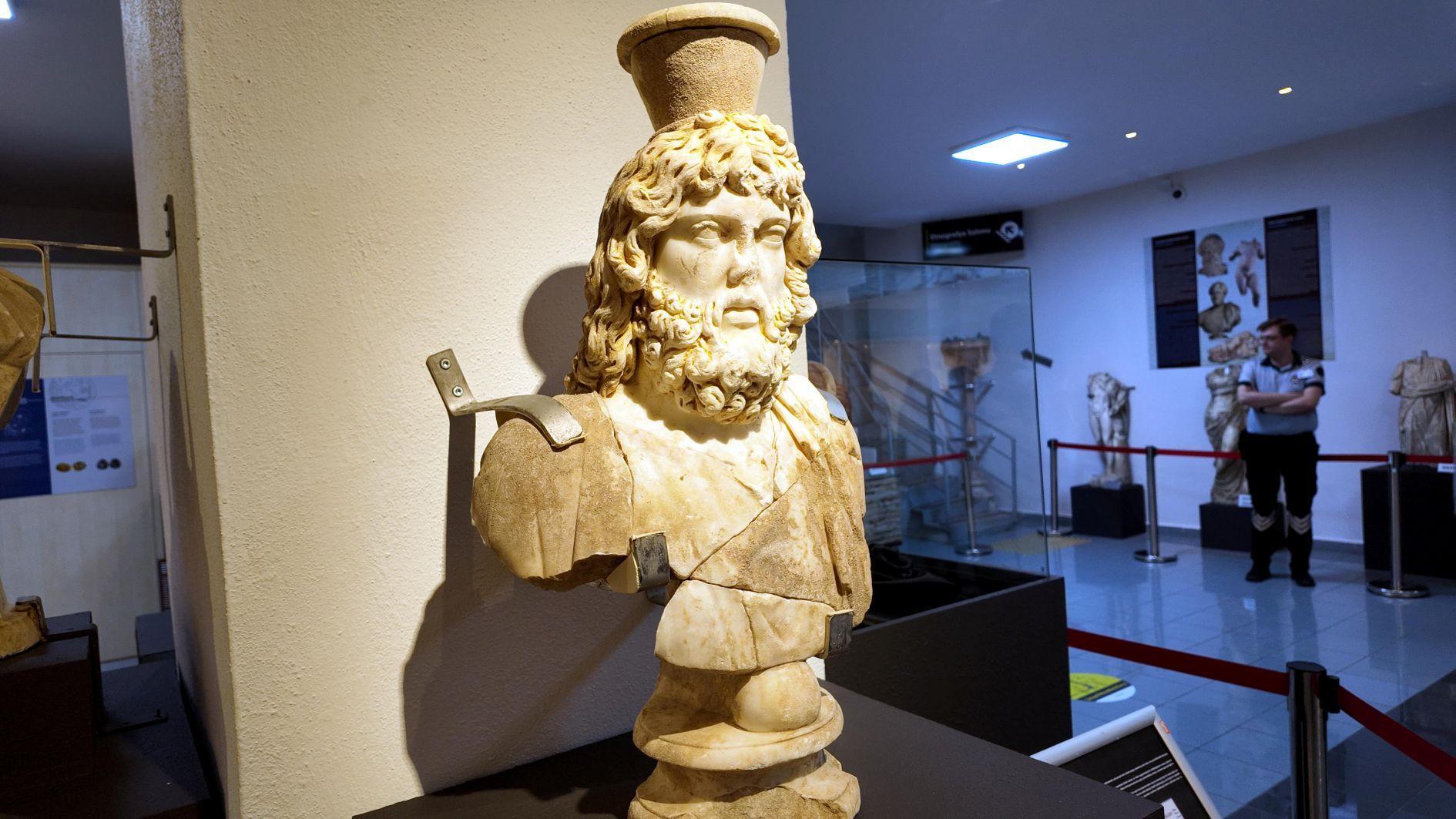
The bust of Zeus Helios-Serapis, discovered near the northern province of Bolu's Yeniçaydurt village, has been put on display at the Bolu Museum following an extensive restoration and assembly process.
Speaking about the newly exhibited artifact during Museum Week (May 18–24), Bolu Museum archaeologist Hakan Ulutürk said, “There are many busts of Zeus Helios-Serapis in museums around the world. What makes ours unique is the sun symbolizing Helios, positioned on a sphere, something rarely seen.”
The bust, now viewable as part of a Museum Week event, was found near Yeniçaydurt and has undergone a long period of restoration. The 74.7 cm-tall sculpture, carved from fine-crystalline white marble, is dated to the second century A.D. during the Roman era.
Providing details on the artifact's journey to the exhibition, Ulutürk said, “This artifact has been in our inventory for many years, but due to its fragmented condition, it was kept in storage. First, it required a complex assembly process. Second, we needed official approval to display it. When the bureaucratic steps were complete, we prepared it for exhibition. Based on its iconography, we already knew it represented a deity worshipped during the Roman period. We also prepared an academic text to introduce it to the scholarly community.”
Bolu Museum Director Atılgan Kaya explained the historical significance of the artifact for the region, saying, “This piece is one of the most important pieces of evidence that Bolu was once the ancient city of Claudiopolis.”